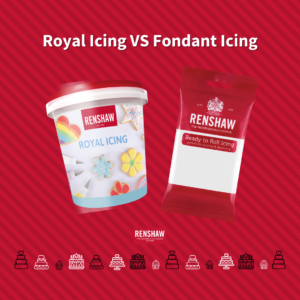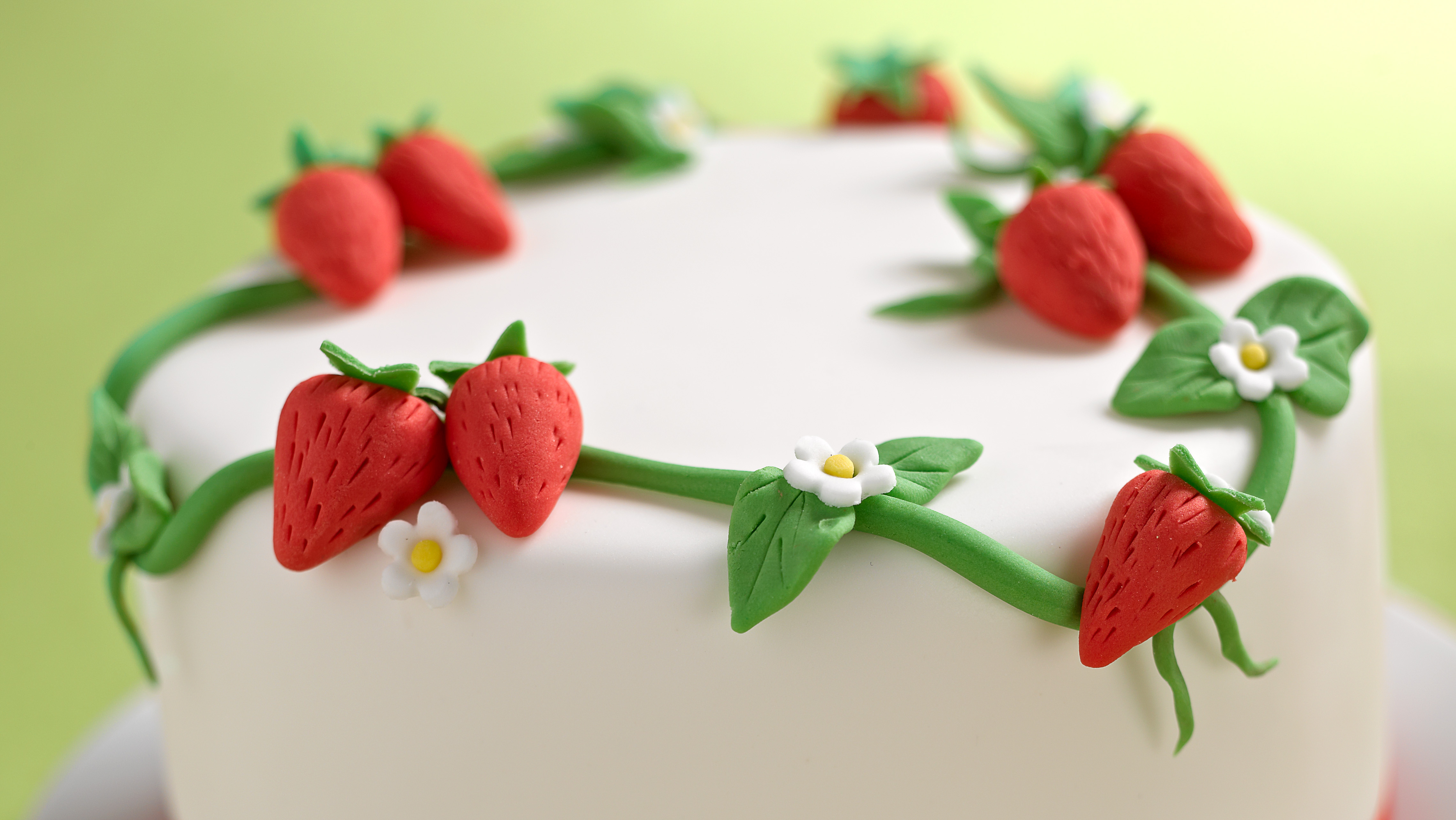How to Ice a Cake
Wednesday 16th March 2016
When you want to create a beautiful, show-stopping cake, first it’s worth grappling with making the icing perfect, and then the more decorative elements can follow. A beautiful icing base may, in fact, be decoration enough and a feature in its own right. This guide will help you to up your skills so you can present perfect cakes every time.

Royal icing vs. fondant icing
Buttercream icing is particularly useful for sandwiching cakes together, acting as an adhesive between fondant icing and the cake, or for decorating cupcakes. However, occasion and more traditional cakes are often iced with fondant or royal icing, which allows for easier transportation, is more robust and has an attractive finish. Let’s first explore some of the pros and cons of both options.
Fondant icing
Advantages
Fondant icing (also known as sugar paste) is very simple to work with. You can store it and it’s easy to cut when you’re slicing your cake. You can buy it or make it fairly easily at home. It’s straightforward to colour yourself, or there are myriad colours you can choose from when you buy it. Fondant icing is very practical to use because it lends itself so well to being sculpted and crafted into decorative shapes.
Disadvantages
Depending on how well prepared your cake surface is, rolled fondant icing can look a bit bumpy or bobbly. A way around this is to add an even layer of buttercream or jam beneath the icing having first to shaved off the surface of the cake to give it a consistent, flat base to adhere to. How well fondant icing holds up to increased temperatures also depends on their ingredients.
Royal icing
Advantages
Royal icing is made of egg whites (or powdered egg whites if you want to avoid salmonella risk) and icing sugar. Some recipes include glycerin, which stops the icing drying too hard, an alternative for which is lemon juice. Royal icing can be manipulated into the traditional Christmas cake snowy peaks. It can set very firmly in nice sharp lines, but it can also be used to create a smooth, firm finish. It’s also a brighter white than fondant icing.
Disadvantages
If you are looking for a flat finish with royal icing, it can sometimes look a little pock marked. There is a tendency for it to shatter or break off in chunks when it is cut, which is not ideal if the cutting of the cake is an important part of your celebration. A way around this is to add the icing in thin layers, making it less tough to cut through and more yielding.
How much icing is needed to cover a cake?
This depends very much on the size of your cake and what type of finish you are going for. Good recipes will usually give you the exact measurements you’ll need and detailed instructions about rolling it out. If you begin with the right cake tin size then the correct quantities prescribed to make your icing should follow. This simple one-tier strawberry cake recipe using fondant icing is an example of a typical cake to fondant icing ratio.

As with fondant, with royal icing the amount you need depends upon the recipe you use. Because royal icing can be built up in layers you can adjust the proportions you need to cover your cake in the that you want, whether that’s a smooth or a peaked finish.
How to roll fondant icing onto a cake
These simple steps will help you through the process of covering your cake in fondant icing.
- Out of the packet ready-to-roll fondant icing can feel a little tough and perhaps brittle. The key is in the preparation, so first knead the icing to the desired consistency.
- Make sure the surface of your cake is the shape you are happy with and has an even surface. You can use a butter cream as a kind of adhesive, or jam is a good alternative.
- It’s always crucial to dust the work surface with icing sugar to stop the fondant sticking.
- As you roll it out be sure to keep the icing moving by rotating it on the surface, adding a little icing sugar to the rolling pin if necessary. Be cautious you don’t dry out the fondant too much.
- Once it is the desired size, use the rolling pin to support the icing sheet as you gently drape it over the cake. Do this slowly to avoid trapping air.
- Rotate the cake to gently ease out the overlaps using a downward swooping motion with the side of your hand.
- Once you are happy with the covering, use a sharp knife to cut off the excess. Be sure that the icing reaches the base of the cake (a cake turntable is an advantage when it comes to trimming your icing). A smoother can help you to create the perfect, smooth finish to your cake.
How to ice a cake with royal icing
Once you have found a recipe that you like for your occasion cake and you have made the icing, you’ll first want to decide whether you would like a smooth or a textured finish.
- It’s very useful to put your cake on a plate or a cake board to make it easy to rotate and get an even spread of icing. An apricot glaze can help seal the cake so crumbs don’t break off when you spread the palette knife over it.
- Royal icing hardens quickly, so be sure to give it a good stir before you use it to get rid of any awkward hard lumps.
- Spread the icing over the cake in the manner of your choosing. For an even, smooth finish that makes the cake easier to cut you might decide to build up thin layers of icing one at a time. For a more textured approach use a palette knife to created contours, or a large-pronged fork to create soft peaks.
- Leave the cake to harden and then you are ready to add whatever other decorations you would like.
Now you have decided which icing approach you would like to take, it’s time to decorate your cake. Or, you can leave your newly iced cake exactly as it is so friends and family can admire the simple beauty of your work. For inspiration about taking your cake to the next stage, why not browse our recipes to explore more exciting baking and decorating ideas?

